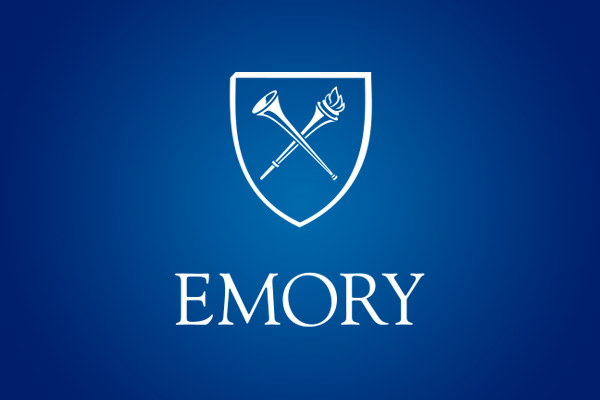June 25, 2024
Emory University is revolutionizing care for cancer, heart disease, diabetes and other common diseases on a global scale. Spearheading this transformation is the Empathic AI for Health Institute (AI.Health). Launched in fall 2023, AI.Health is part of AI.Humanity, a university-wide initiative dedicated to shaping the artificial intelligence revolution to better human health, generate economic value and promote social justice.
The institute’s mission is three-fold: creating accessible and affordable AI innovations for health care, implementing AI within Emory Healthcare to directly benefit patients and ultimately scaling these advancements for global impact.
Anant Madabhushi, PhD, serves as the executive director of AI.Health. With a primary appointment in the Department of Biomedical Engineering, Madabhushi also holds secondary appointments in the Departments of Radiology and Imaging Sciences, Biomedical Informatics (BMI), Urology, Radiation Oncology, Global Health and Pathology. He shares his insights about the future of the institute, the advantages of a multidisciplinary team and the importance of collaboration.
The U.S. health care enterprise is the most expensive in the world, yet we rank low in terms of life expectancy and overall quality of life. 42% of newly diagnosed Americans with cancer will lose their life savings due to medical costs.
We must address all of the issues that are part of the health care enterprise including financial toxicity. If we want to advance medicine for patients, we can’t only think about it from the narrow confines of health. We have to think about the financial piece and the economic side of things.
That is why the work that we are doing is crucial. We’re approaching it from a pluralistic, multifaceted perspective, thinking about how we improve health and optimize medicine for our patients. At the same time, we do it in a way that is affordable, accessible and equitable, so that we can reduce this issue of financial toxicity.
The mission of the institute is multidisciplinary, requiring experts in computer science, biomedical engineering and various medical fields to work together. This collaboration helps identify and solve clinical needs. We truly embody this concept of research, and it is a fact that none of this can happen in a vacuum. The AI scientists need to work closely with the physicians to understand the clinical needs. Where are the unmet clinical problems, and what are the problems we need to solve?
Diverse perspectives are crucial, not just for technical expertise but also for addressing ethical issues and ensuring AI tools are equitable across different populations. Having a plurality of voices and diversity in your team is critical to provide these technologies to patients and impact different populations.
As the institute’s director, the focus on ethical AI and addressing bias from the outset must come from the top, which is why it has been part of our research’s DNA.
I’m very proud of the team we lead here, which has grown to nearly 60 people in a very short period. Our group is very diverse culturally and geographically, and that brings a responsibility to develop universally accessible tools that work well for everyone.
Learn more about the Emory Empathetic AI for Health Institute.
By downloading Emory news media, you agree to the following terms of use:
By exercising the Licensed Rights (defined below), You accept and agree to be bound by the terms and conditions of this Creative Commons Attribution-NoDerivatives 4.0 International Public License (“Public License”). To the extent this Public License may be interpreted as a contract, You are granted the Licensed Rights in consideration of Your acceptance of these terms and conditions, and the Licensor grants You such rights in consideration of benefits the Licensor receives from making the Licensed Material available under these terms and conditions.
Section 1 – Definitions.
Section 2 – Scope.
Other rights.
Section 3 – License Conditions.
Your exercise of the Licensed Rights is expressly made subject to the following conditions.
Attribution.
If You Share the Licensed Material, You must:
Section 4 – Sui Generis Database Rights.
Where the Licensed Rights include Sui Generis Database Rights that apply to Your use of the Licensed Material:
Section 5 – Disclaimer of Warranties and Limitation of Liability.
Section 6 – Term and Termination.
Where Your right to use the Licensed Material has terminated under Section 6(a), it reinstates:
Section 7 – Other Terms and Conditions.
Section 8 – Interpretation.
Creative Commons is not a party to its public licenses. Notwithstanding, Creative Commons may elect to apply one of its public licenses to material it publishes and in those instances will be considered the “Licensor.” The text of the Creative Commons public licenses is dedicated to the public domain under the CC0 Public Domain Dedication. Except for the limited purpose of indicating that material is shared under a Creative Commons public license or as otherwise permitted by the Creative Commons policies published at creativecommons.org/policies, Creative Commons does not authorize the use of the trademark “Creative Commons” or any other trademark or logo of Creative Commons without its prior written consent including, without limitation, in connection with any unauthorized modifications to any of its public licenses or any other arrangements, understandings, or agreements concerning use of licensed material. For the avoidance of doubt, this paragraph does not form part of the public licenses.
